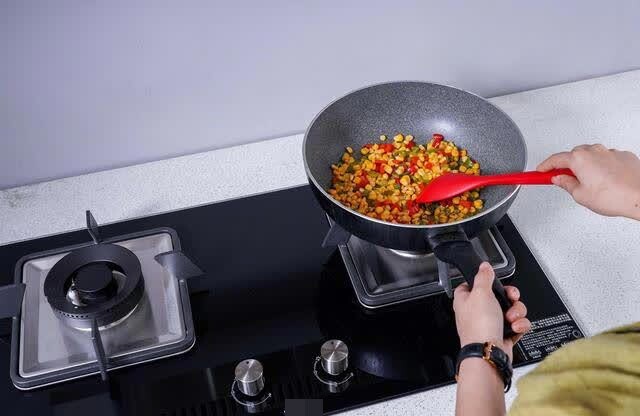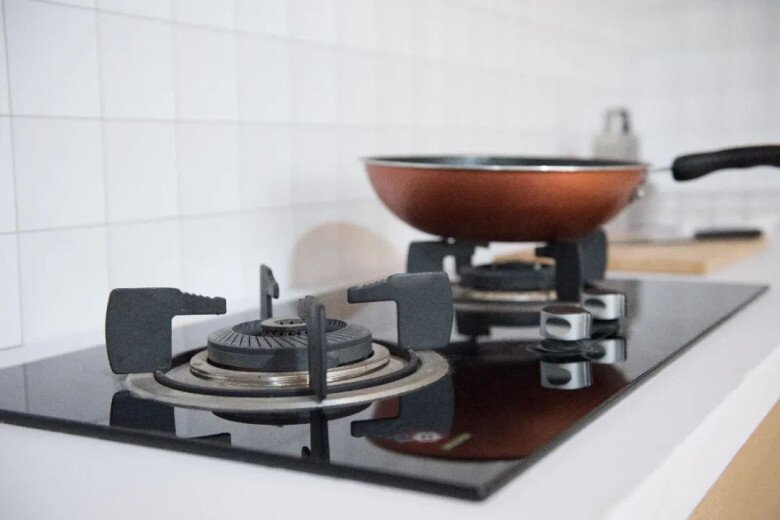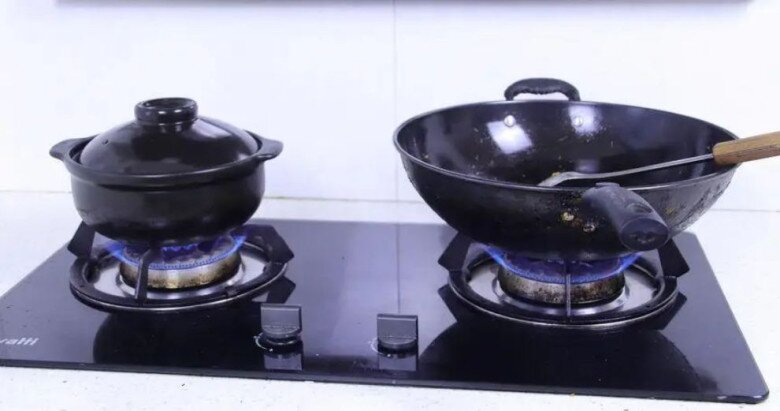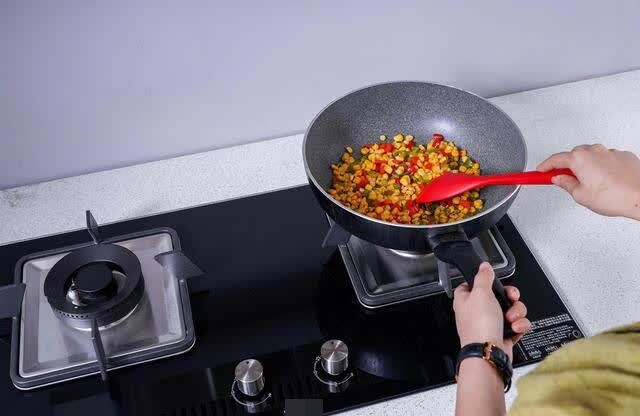Gas stoves are a common kitchen appliance due to their convenience. There are typically two types of gas stoves: single and double burners. The double burner variety is more popular as it allows you to cook two dishes simultaneously, saving time.
However, many people advise against cooking, especially stir-frying, on the left burner of a gas stove. Why is that?

1. Two reasons to avoid cooking on the left burner of a gas stove
– Using the stove with your non-dominant hand can lead to burns
Most of us are right-handed, and this includes when we’re cooking and adding spices to our dishes. If you’re stir-frying on the right burner, it’s easier to reach for spices or other necessary items, and you can flip or mix the ingredients more comfortably without worrying about burns.
On the other hand, when cooking on the left burner, you have to turn your body to reach for spices, which is more challenging since you’re not used to using your left hand. This can easily lead to spilling spices.
Additionally, because you’re not using your dominant hand, there’s a higher risk of burns when lifting pots or pans from the left burner, as you may accidentally touch the pot on the right burner.
Therefore, it’s recommended to stir-fry on the right burner. For dishes that require less flipping or mixing, such as stews or braised dishes, the left burner is more suitable.

– The left burner has weaker flames
The second reason to avoid stir-frying on the left burner is that the flames are usually designed to be smaller and more concentrated. Therefore, the left burner is better suited for dishes that need to be kept warm at low temperatures for extended periods, such as soups, stews, or porridge.
In contrast, the right burner has stronger and more widely distributed flames, making it ideal for cooking methods that require high temperatures, like deep-frying and stir-frying. This not only reduces cooking time but also makes stir-fried dishes more flavorful.
Of course, there are gas stoves with similar flame designs on both burners. If you prefer this type of stove, check the specifications before purchasing.

2. Safety precautions when using a gas stove
While gas stoves are convenient, they can also be dangerous if not used properly. They may cause gas leaks, fires, or explosions. To ensure safety, keep the following in mind when using a gas stove:
Additionally, when using a gas stove, it’s essential to follow these rules for safer cooking:
– Ensure proper ventilation in the kitchen
When using a gas stove, avoid closing the doors and windows, especially in a relatively confined space. Doing so can lead to gas buildup and carbon monoxide poisoning.
However, leaving the windows wide open is also not advisable, as strong drafts can affect the flame and hinder the cooking process. It also increases the risk of fire by allowing the flame to spread to other objects easily.
It’s best to place the stove in an area sheltered from drafts, open doors or windows during cooking, or install an exhaust fan to ensure proper ventilation and dissipate gas and toxic fumes.

– Lock the gas valve after each use
If you forget to turn off the stove, or if the gas hose accidentally cracks or is damaged by insects, it can lead to gas leaks. This can be especially dangerous if no one is home.
Therefore, after cooking, lock the gas valve on the cylinder and wait for the flame to extinguish completely before turning off the stove. Before going to bed or leaving the house, check that the gas stove is securely locked to prevent leaks.
– Regularly clean the gas stove
Cleaning your gas stove ensures its longevity and aesthetic appeal, preventing rust and corrosion. It also helps maintain a blue flame, preventing a yellow flame that can blacken pots and damage the ignition system and burners.
– Conduct regular safety checks on your gas stove
To ensure the utmost safety, inspect your gas stove, cylinder, hose, and regulator periodically (every 6 months to a year). Replace the hose every 2-3 years and the pressure regulator every 5 years.
If your gas stove shows signs of rust but still functions, pay close attention to the affected areas, especially if they are near the ignition system or burners. Rust can lead to gas leaks and increase the risk of fire.
If your gas stove is old and damaged, it’s best to replace it. Also, avoid using very old cylinders, especially if they show signs of corrosion.




































